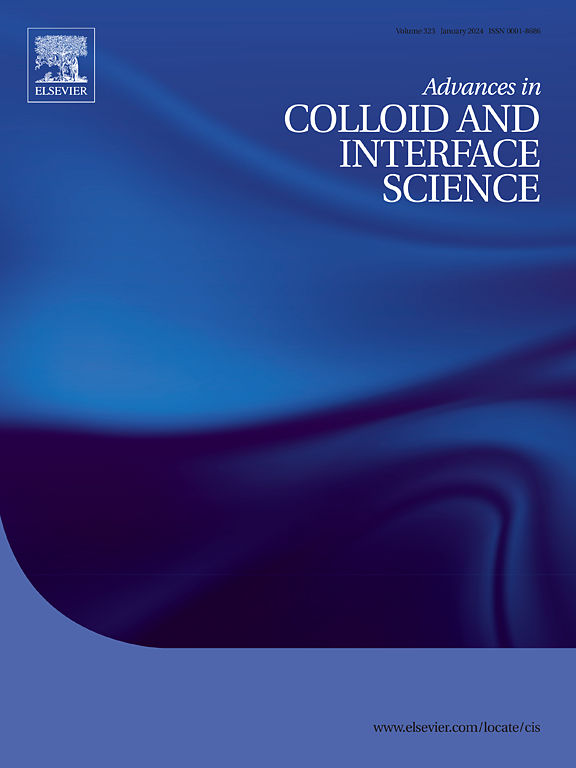致细菌金属和半导体纳米系统作为一种潜在的可持续解决方案的健康复杂性
IF 19.3
1区 化学
Q1 CHEMISTRY, PHYSICAL
引用次数: 0
摘要
考虑到电子废物管理的复杂性,以满足数字时代技术的要求,本文强调迫切需要环保,经济和可持续的工程解决方案。在这里,它独特地专注于细菌的金属和半导体纳米系统,作为一个有前途但尚未开发的可持续材料创新解决方案。与涉及植物或真核微生物的传统绿色纳米制造方法不同,细菌具有许多制造优点,包括易于培养,广谱属,丰度,快速细胞分裂效率,遗传弹性和高生物还原/氧化效率,使其成为工程纳米结构的高度适应性平台。本文提供了一个全面的、史无前例的框架,整合了细菌合成途径(细胞间和细胞外)、细菌类别(单胚层和双胚层)、反应参数(pH、温度、前体浓度)和分子前体(蛋白质、酶、外多糖、氧化还原介质)。它进一步强调了细菌纳米材料在医药、能源、环境和食品领域的新兴应用,这些材料具有抗病原、催化、抗癌、抗氧化、光催化和生物相容性等特性,有助于改善“同一个健康”。此外,本文强调探索诸如细胞毒性、可伸缩性和稳定性之类的挑战,这些挑战限制了它们的变革方面。为了解决这些障碍,建议采用人工智能(AI)、复杂系统、生物信息学和生物技术等当代技术进行系统研究,包括体外/体内毒性、生命周期、生物分布和生物积累分析,以及预测建模,以弥合实验室到市场的差距,以丰富所建议的纳米系统类别。总的来说,这篇文章不仅整合了最先进的技术,而且还提出了一个新的跨学科愿景,即细菌复杂性驱动下一代纳米工程,与联合国的可持续发展目标保持一致。本文章由计算机程序翻译,如有差异,请以英文原文为准。

Bacteriogenic metallic and semiconducting nano-system as a potential sustainable solution for one health complexities
Considering the complexities of electronics waste management to meet the requirements of digital-age technologies, this article underscores the pressing need for eco-friendly, economical, and sustainable engineering solutions. Here, it uniquely focuses on bacteriogenic metallic and semiconducting nano-systems as a promising yet underexplored solution for sustainable materials innovation. Unlike conventional green nanofabrication methods involving plants or eukaryotic microbes, bacteria possess numerous merits for fabrication, including ease of cultivation, a wide spectrum of genera, abundance, prompt cell division efficacy, genetic elasticity, and high bio-reduction/oxidation efficacy that make them highly adaptable platforms for engineered nanostructures. This article provides a comprehensive and first-of-its-kind framework integrating bacterial synthesis pathways (intercellular and extracellular), bacterial class (Monoderm and Diderm), reaction parameters (pH, temperature, precursor concentration), and molecular precursors (proteins, enzymes, exopolysaccharides, redox mediators). It further highlights emerging applications of bacteriogenic nanomaterials across medicine, energy, environment, and food sectors, enabled by their antipathogenic, catalytic, anticancer, antioxidant, photocatalytic, and biocompatible properties, contributing to the betterment of One Health. Besides, this article emphasizes exploring challenges like cytotoxicity, scalability, and stability, which restrict their transformative aspects. To address these obstacles, systematic studies including in-vitro/in-vivo toxicity, lifecycle, biodistribution and bioaccumulation analyses, and predictive modelling by adopting contemporary technologies like artificial intelligence (AI), complex systems, bioinformatics, and biotechnology to bridge the laboratory-to-market gap are suggested to enrich the suggested class of nano-systems. Overall, this article not only consolidates the state-of-the-art but also presents a novel interdisciplinary vision where bacterial complexity drives next-generation nanoengineering, aligning with the United Nations' sustainability goals.
求助全文
通过发布文献求助,成功后即可免费获取论文全文。
去求助
来源期刊
CiteScore
28.50
自引率
2.60%
发文量
175
审稿时长
31 days
期刊介绍:
"Advances in Colloid and Interface Science" is an international journal that focuses on experimental and theoretical developments in interfacial and colloidal phenomena. The journal covers a wide range of disciplines including biology, chemistry, physics, and technology.
The journal accepts review articles on any topic within the scope of colloid and interface science. These articles should provide an in-depth analysis of the subject matter, offering a critical review of the current state of the field. The author's informed opinion on the topic should also be included. The manuscript should compare and contrast ideas found in the reviewed literature and address the limitations of these ideas.
Typically, the articles published in this journal are written by recognized experts in the field.

 求助内容:
求助内容: 应助结果提醒方式:
应助结果提醒方式:


